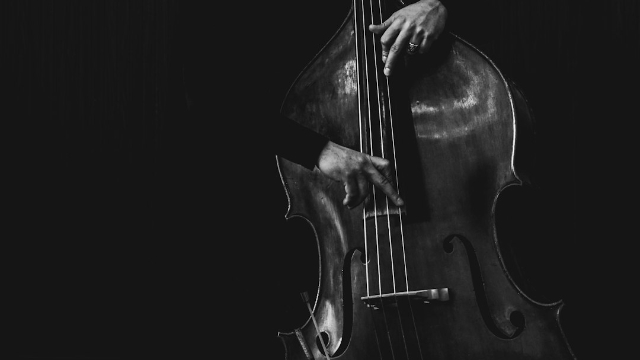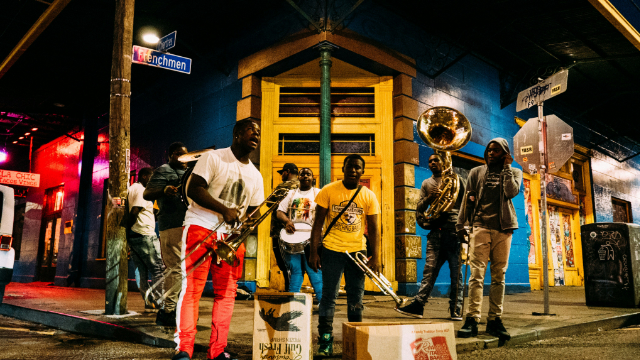A brief overview of the jazz song “That’s a Plenty”, including its historical significance, notable recordings, and enduring influence on the jazz genre.
Overview of “That’s a Plenty” Jazz Song
The jazz standard “That’s a Plenty” has left an indelible mark on the history of jazz music, captivating audiences and musicians alike with its infectious melody and lively rhythm. Originating as a 1914 ragtime piano composition by Lew Pollack with lyrics by Ray Gilbert, the song quickly found its way into the repertoire of Dixieland jazz, becoming a beloved piece that has stood the test of time.
Throughout the years, “That’s a Plenty” has been interpreted and performed by a myriad of artists, solidifying its status as a jazz standard. Notable recordings by Prince’s Band, New Orleans Rhythm Kings, Freddy Martin and His Orchestra, and Albert Nicholas with the Big Chief Jazz Band have contributed to the song’s enduring popularity. The song’s impact on the jazz genre has been profound, influencing the development of Dixieland jazz and serving as a source of inspiration for subsequent jazz compositions, cementing its place in the annals of jazz history.

Origins and History of “That’s a Plenty”
Composed in 1914, “That’s a Plenty” is a ragtime piano piece created by Lew Pollack, featuring lyrics by Ray Gilbert [4]. The song has become an integral part of the Dixieland jazz repertoire and is often performed both instrumentally and with lyrics, showcasing its versatility and adaptability within the jazz tradition.
The song’s roots can be traced back to the early 20th century, marking a significant period in the evolution of jazz music. Its composition coincided with a time of great innovation and creativity in the jazz landscape, contributing to the rich tapestry of musical styles emerging during that era. “That’s a Plenty” reflects the exuberance and liveliness characteristic of the time, capturing the essence of the ragtime and early jazz movements that were sweeping through American music scenes. Its enduring popularity and continued presence in the jazz standard are a testament to its historical significance and the impact it has had on jazz music.
Furthermore, the song’s original composition as a ragtime piece underscores its connection to a pivotal period in music history when ragtime was a dominant force in popular music. The syncopated rhythms and infectious melodies of ragtime had a profound influence on the development of jazz, and “That’s a Plenty” stands as a noteworthy example of this transition. Its ability to seamlessly integrate elements of ragtime into the emerging jazz genre showcases the song’s historical importance and its role in shaping the musical landscape of the time. As a result, “That’s a Plenty” holds a revered place in the annals of jazz history, embodying the spirit of innovation and musical exploration that defined the early 20th century jazz era.
Characteristics of Trad Jazz and New Orleans Jazz
Trad jazz, also known as New Orleans jazz or Dixieland jazz, is characterized by its lively, improvisational style and collective ensemble playing. It often features a front line of trumpet, clarinet, and trombone, with a rhythm section of piano, banjo, drums, and double bass [3]. This style of jazz emphasizes the spontaneous and energetic interaction among the musicians, creating a vibrant and dynamic musical experience for both the performers and the audience.
One notable example of the spirited nature of New Orleans jazz is the song “When the Saints Go Marching In.” This iconic tune exemplifies the syncopated rhythms and collective improvisation that are hallmarks of the genre. The lively interplay between the instruments and the infectious energy of the performance are quintessential features of New Orleans jazz, reflecting its celebratory and communal origins. Furthermore, the tradition of “cutting contests” in New Orleans jazz, where musicians engage in friendly musical competitions to showcase their improvisational skills, highlights the emphasis on collective creativity and spirited interaction within the genre.
In addition to its musical characteristics, New Orleans jazz is deeply rooted in the cultural and social fabric of its birthplace. The genre’s syncopated rhythms and lively melodies often reflect the multicultural influences of New Orleans, incorporating elements of African, Caribbean, and European musical traditions. This fusion of diverse musical styles contributes to the distinctive and infectious sound of New Orleans jazz, making it a beloved and enduring genre in the history of jazz music.
Notable Recordings and Performances of “That’s a Plenty”
The song “That’s a Plenty” has a rich history of notable recordings and performances that have solidified its position as a jazz standard. For instance, Prince’s Band, a renowned ensemble of the early 20th century, recorded a version of “That’s a Plenty,” showcasing the song’s enduring appeal and significance in the evolution of jazz music. Similarly, the New Orleans Rhythm Kings, a pioneering group in the development of traditional jazz, contributed to the song’s legacy by recording their own rendition, further cementing its place in the annals of jazz history.
Freddy Martin and His Orchestra also left their mark on “That’s a Plenty” with a distinctive performance that highlighted the song’s infectious melody and lively rhythm. This rendition not only showcased the band’s musical prowess but also added to the song’s enduring popularity. Additionally, Albert Nicholas, a prominent clarinetist, recorded “That’s a Plenty” with the Big Chief Jazz Band, infusing his unique style and artistry into the song, thus influencing subsequent interpretations by other musicians and bands. These recordings and performances collectively underscore the enduring influence and importance of “That’s a Plenty” in the jazz genre, solidifying its status as a beloved jazz standard.
Influence of “That’s a Plenty” in Jazz Music
The influence of “That’s a Plenty” on the evolution of jazz has been profound, particularly in shaping the development of Dixieland jazz and establishing itself as a standard in the jazz repertoire. The song’s captivating melody and lively rhythm have not only left an indelible mark on the jazz genre but have also served as a source of inspiration for subsequent jazz compositions, solidifying its legacy in jazz music.
Moreover, “That’s a Plenty” has played a pivotal role in influencing the vibrant and spirited nature of Dixieland jazz. This style of jazz, also known as New Orleans jazz, is characterized by its lively and collective improvisational style, featuring syncopated rhythms and a front line of trumpet, clarinet, and trombone, complemented by a rhythm section of piano, banjo, drums, and double bass. The infectious melody and rhythm of “That’s a Plenty” have exemplified the essence of Dixieland jazz, contributing to its enduring popularity and significance within the jazz repertoire.
An example of the song’s influence can be seen in its interpretation and performances by renowned jazz artists such as the New Orleans Rhythm Kings and Albert Nicholas with the Big Chief Jazz Band. Their renditions and recordings of “That’s a Plenty” have not only showcased the song’s adaptability and timelessness but have also reinforced its position as a quintessential piece in the world of jazz music, further solidifying its influence on the genre.

Conclusion
In conclusion, “That’s a Plenty” has left an indelible mark on the jazz music landscape, symbolizing the rich history and continuous influence of the genre. From its roots in ragtime piano composition to its integration into the vibrant world of Dixieland jazz, the song has stood the test of time, solidifying its place as a quintessential piece in jazz history. Not only has “That’s a Plenty” shaped the development of Dixieland jazz, but its infectious melody and lively rhythm have also inspired subsequent jazz compositions, leaving an enduring legacy that continues to captivate musicians and jazz enthusiasts alike.
One notable example of the song’s influence is its interpretation by the New Orleans Rhythm Kings, a prominent jazz band of the 1920s. Their rendition of “That’s a Plenty” showcased the spirited interaction among the band members, characteristic of New Orleans jazz, and solidified the song’s status as a jazz standard. This exemplifies how the song’s vivacious and improvisational nature has not only shaped the Dixieland jazz repertoire but also influenced the spirited performances of jazz ensembles throughout the decades, highlighting its enduring impact on the genre.
In essence, “That’s a Plenty” serves as an invitation for music enthusiasts to explore its historical significance and embrace its ongoing influence, encouraging a deeper appreciation for its pivotal role in shaping the world of jazz. As the song continues to resonate through the annals of jazz history, it beckons listeners to immerse themselves in its timeless allure and celebrate its enduring legacy.



